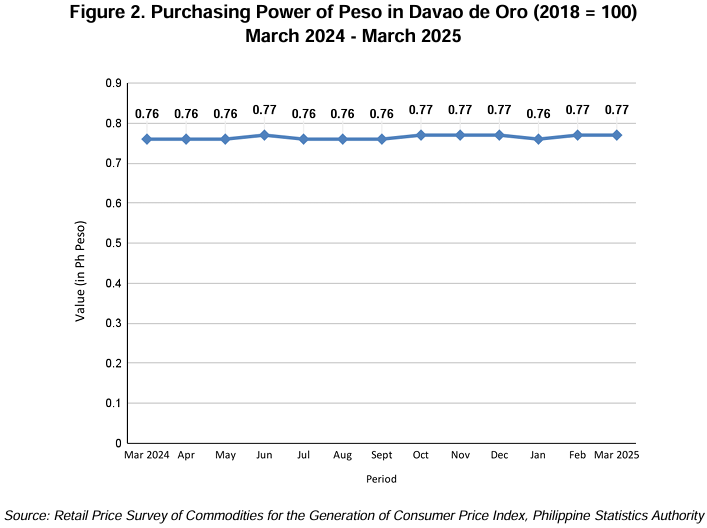The headline inflation of prices in Davao de Oro retained at -1.2 percent in March 2025 from February 2025. This brings the provincial average inflation rate to -0.5 percent. The inflation rate in March 2024 was observed at 4.1 percent. (Table 1 and Figure 1)
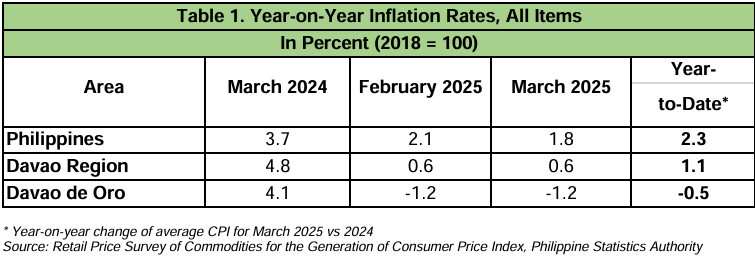
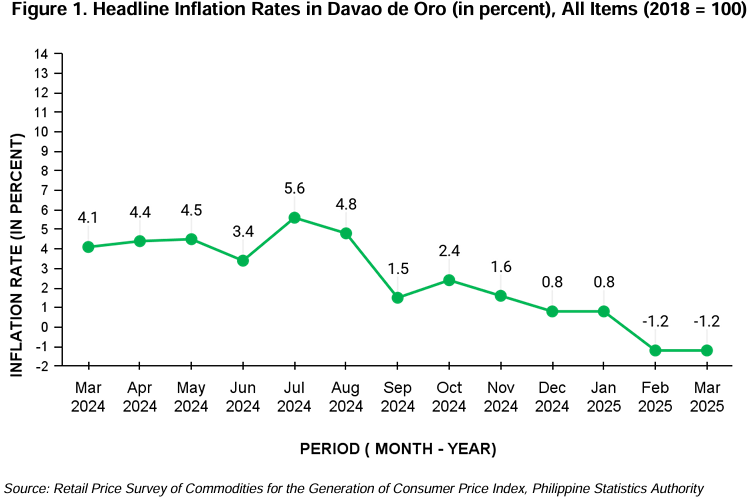
The unchanged provincial inflation rate in March 2025 from February 2024 was mainly driven by the retention in the indices of the following commodity groups:
(a) Food and non-alcoholic beverages at -4.1 percent;
(b) Health at 4.3 percent;
(c) Information and communication at 0.1 percent;
(d) Education services at 0.7 percent;
(e) Restaurants and accommodation services at 18.1 percent; and
(f) Financial services with zero percent.
Meanwhile, the commodity groups that posted lower annual growth rate in their respective inflation for the month of March 2025 are Transport at -2.4 percent and Recreation, sport and culture at 3.4 percent. (Table 2)
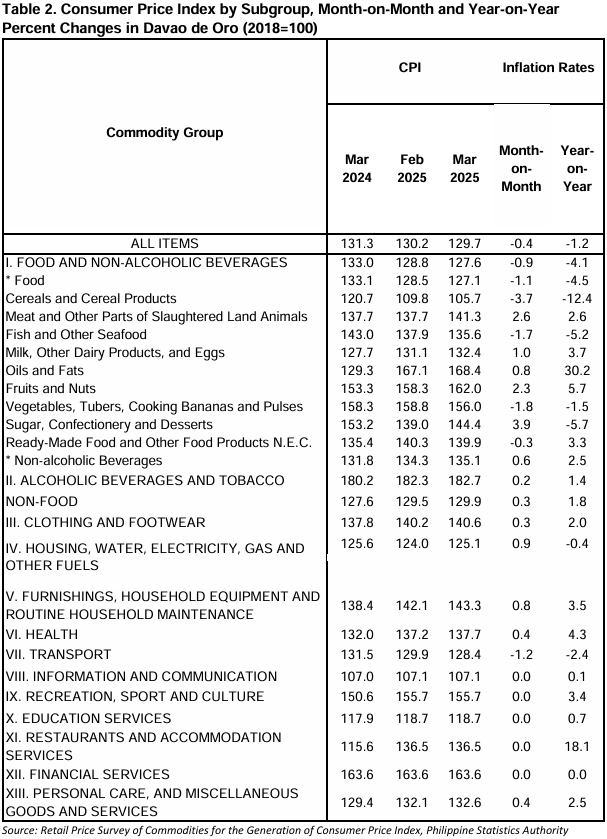
On the other hand, faster annual increment in the indices of commodity groups as compared to their respective previous month’s inflation rates are as follows:
a. Alcoholic beverages and tobacco at 1.4 percent;
b. Clothing and footwear at 2.0 percent;
c. Furnishings, household equipment and routine household maintenance at 3.5 percent; and
d. Personal care, and miscellaneous goods and services at 2.5 percent.
Furthermore, the commodity group of Housing, water, electricity, gas and other fuels posted a slower annual decline in its inflation rate from year-on year percentage annual drop at -0.6 percent to -0.4 percent. (Table 2)
The Food and non-alcoholic beverages commodity group had the highest contribution for the month’s inflation rate with 171.7 percent share (-2.06 points). As to the share to the month’s inflation rate of the said commodity group, Cereals and cereal products posted the highest percentage share of 83.4 percent (-2.20 points) and having a -12.4 percent inflation rate. This was followed by Fish and other seafood with a 37.0 percent share (-0.44 points) and -5.2 percent inflation rate. Sugar, confectionery and desserts had the third highest percentage share of 6.3 percent (-0.08 points) with -5.7 percent inflation rate. (Table 3)
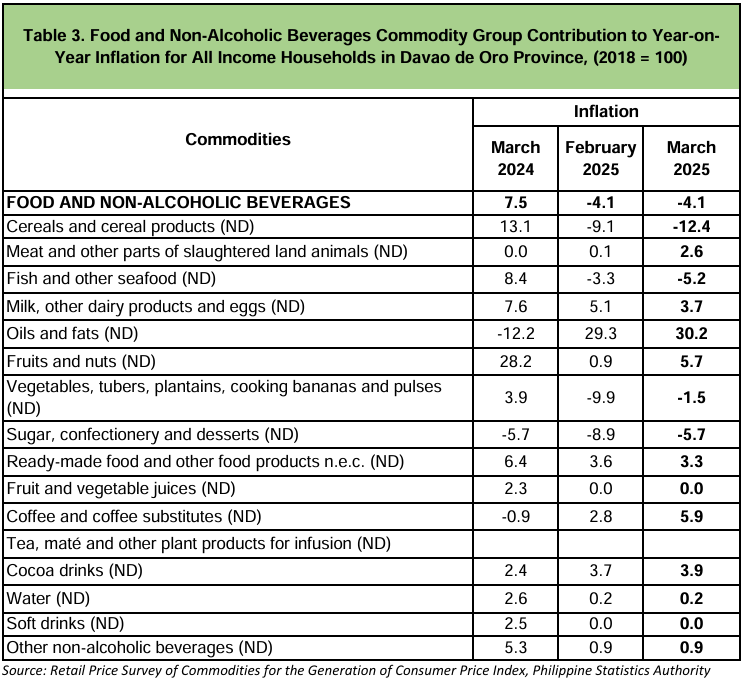
The second highest contributor is the Transport commodity group with 16.3 percent share (-0.20 points) among all items. As to the share to the month’s inflation rate of the said commodity group, Fuels and lubricants for personal transport equipment posted the highest share of 23.3 percent (-0.28 points) with -8.6 percent inflation rate. (Table 4)
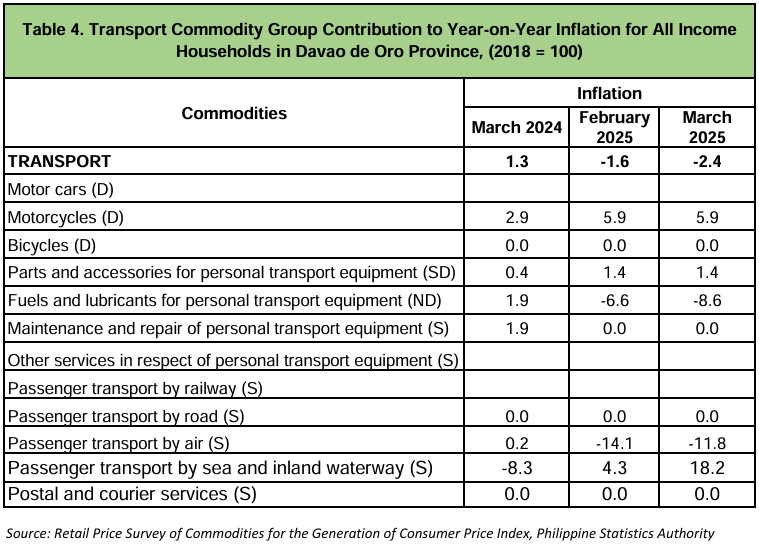
The Housing, water, electricity, gas, and other fuels commodity group ranked third with a 5.6 percent contribution (-0.07 points). As to the share to the month’s inflation rate of the said commodity group, Electricity posted the highest share of 9.3 percent (-0.11 points) with -3.4 percent inflation rate. (Table 5)
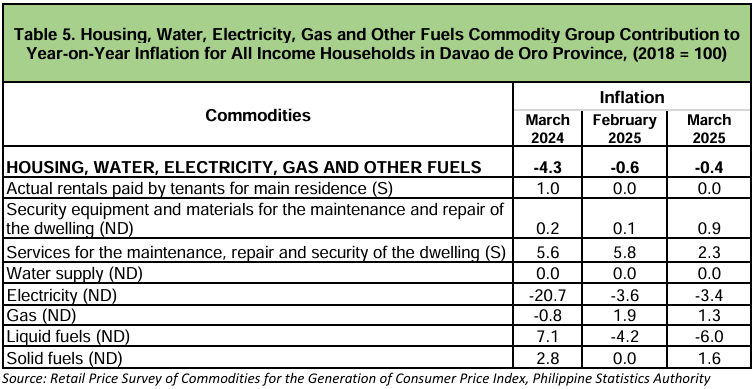
Below is the summary of inflation rates in Davao de Oro Province since the rebasing of the market basket with 2018 as the base year.
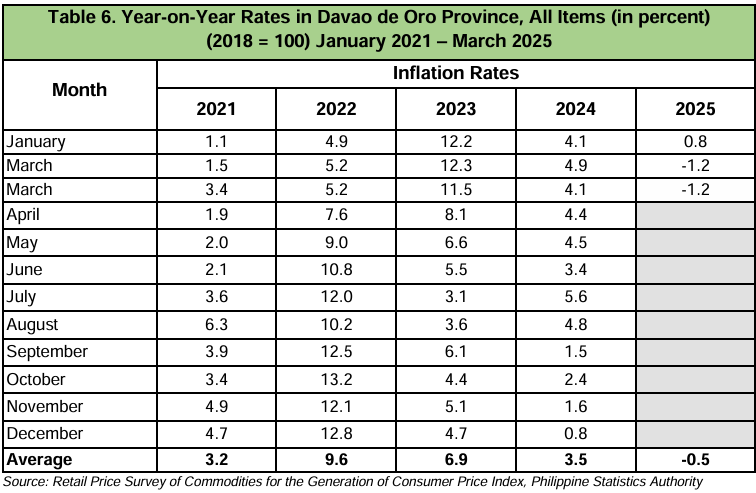
Consequently, the Purchasing Power of Peso (PPP) with base year 2018 in Davao de Oro is equivalent to 0.77 in March 2025.
